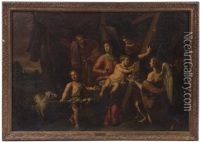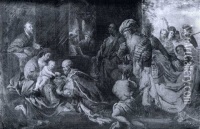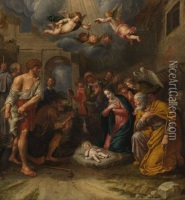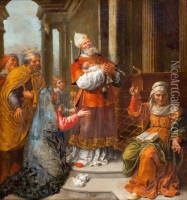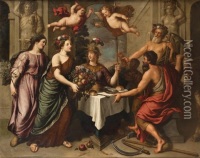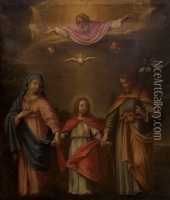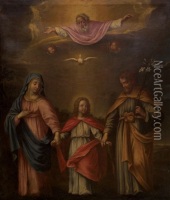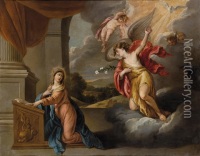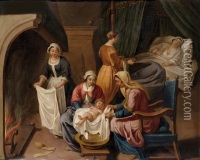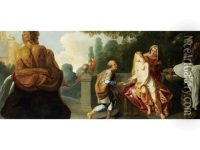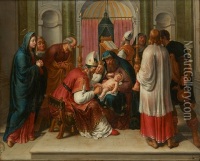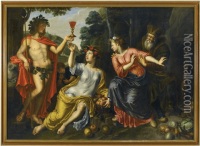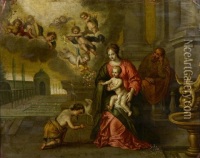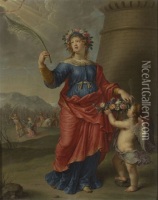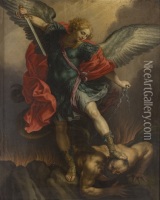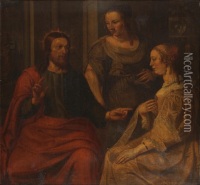Peter Van Lint Paintings
Peter Van Lint or Pieter van Lint was a Flemish Baroque painter who was born on June 28, 1609 in Antwerp, then part of the Spanish Netherlands. He was known for his history paintings, portraits, and genre works. Van Lint was a skilled artist whose works reflected a combination of Flemish traditions and the influence of the Italian masters, which he assimilated during his time in Italy.
Van Lint was a pupil of Artus Wolffort, and later, he became a master in the Guild of Saint Luke in Antwerp in 1630. His early work was influenced by his teacher and by the dominant Flemish style of painting. However, in 1634, Van Lint traveled to Rome, which was a common practice among Northern European artists at the time. There, he was influenced by the works of the Italian masters and was particularly inspired by the art of the High Renaissance and Baroque periods. He spent about 10 years in Italy before returning to Antwerp.
Upon his return to Antwerp, Van Lint's style was a synthesis of his Flemish roots and his Italian experiences. His compositions often featured classical themes and demonstrated his mastery of chiaroscuro and perspective. He was adept at creating a sense of depth and realism in his works, and his paintings often contained a rich palette and intricate details. Although he was less known than some of his contemporaries, Van Lint had a successful career and received commissions from churches and private patrons.
In addition to history paintings, Van Lint also created portraits and was known to have worked on frescoes, although many of these have not survived or have been attributed to him with some uncertainty due to the lack of signatures on his works. His genre scenes displayed a keen observation of everyday life and often contained moral or allegorical messages.
Peter Van Lint died on September 24, 1690, in Antwerp. His works can still be found in various museums and collections around the world, and he is remembered as a significant figure in the Flemish Baroque movement, albeit not as widely recognized as some of his peers such as Peter Paul Rubens or Anthony van Dyck. His son, Hendrik Frans van Lint, who was born much later in his life, went on to become a notable painter as well, although he worked primarily in Rome and is known for his Italianate landscapes.

